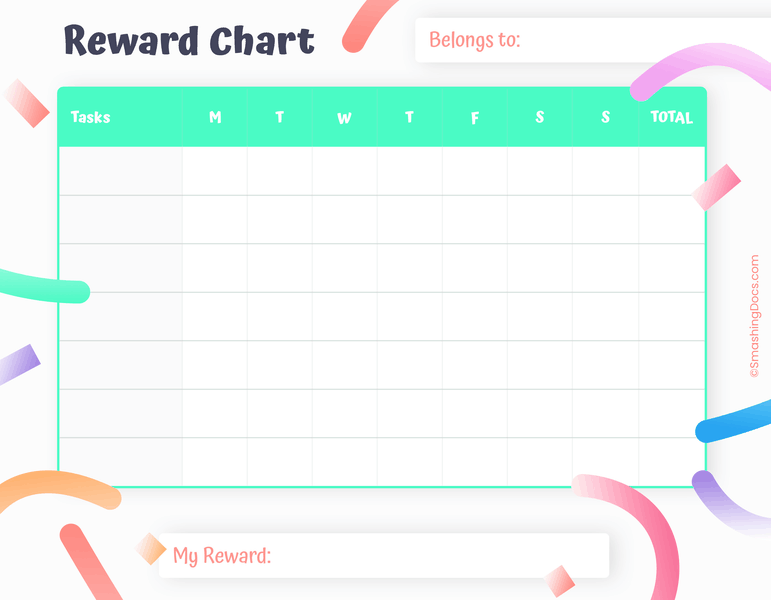
Razzle-Dazzling Reward Charts for Kids
Celebrate the big wins of your smallest family members with my funky and spunky reward chart templates.

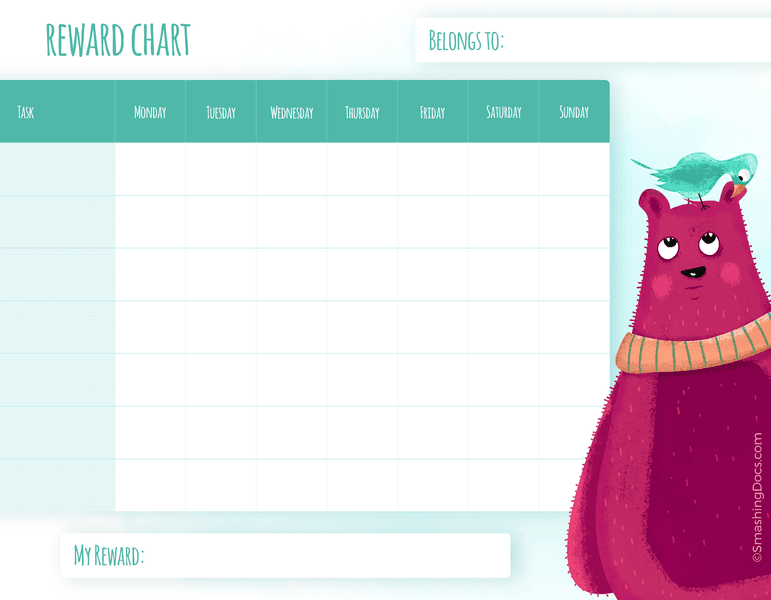
Free Fuzzy Bear Reward Chart Template
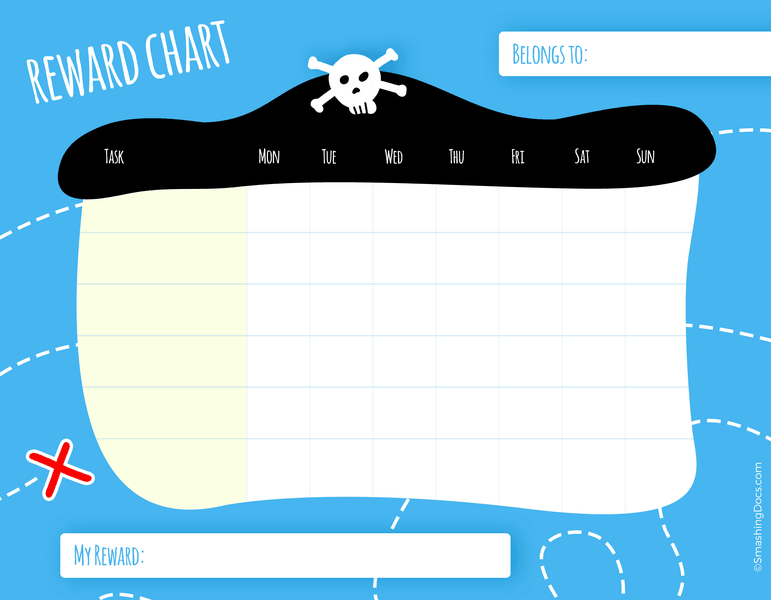
Free Skull and Crossbones Pirate Reward Chart Template
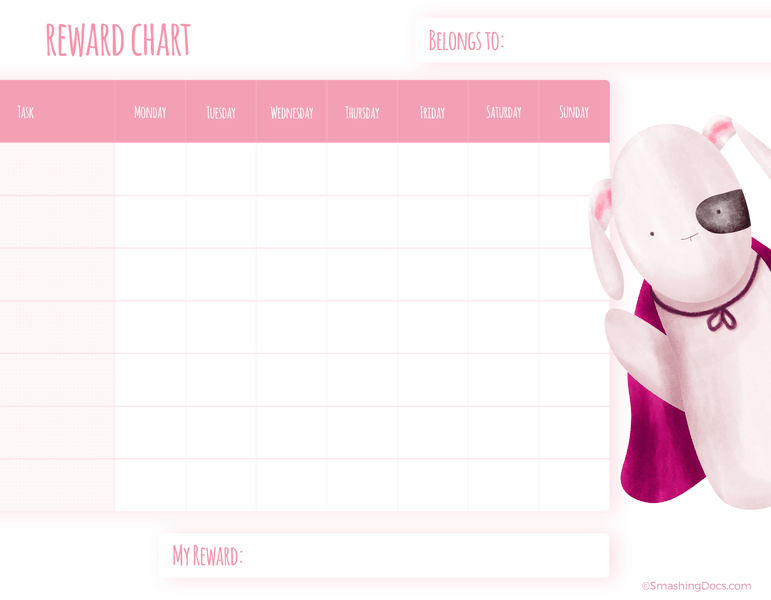
Free Bunny Superhero Reward Chart Template
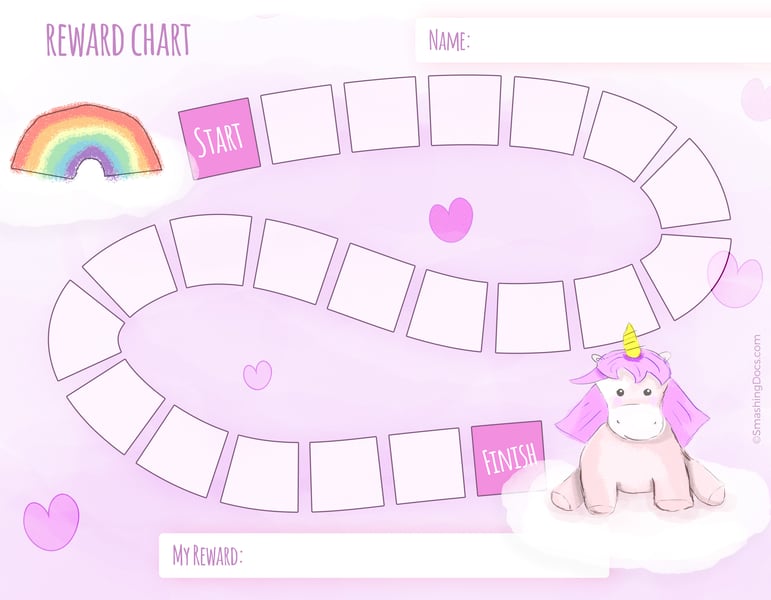
Free Unicorn and Rainbow Reward Chart Template
Reward Charts for Kids: Fostering Good Behavior Through Positive Reinforcement
Teaching your child to be on their best behavior all the time is no small task. Some days, your munchkins are absolute angels. On others…well, it’s one tantrum after another for no apparent reason.
Since children are still developing critical thinking and logical cognition skills, negotiating and persuading them to do the right thing can be very challenging. That said: you have an alternative, more engaging way to moderate your child’s behavior — using reward charts.
A reward chart taps into the power of positive reinforcement — a physiological technique of promoting certain behaviors through an external positive stimulus (a reward). Scientists observed that people at every age are more likely to repeat certain actions when a favorable outcome follows.
In other words: when you get praised for something, you are more likely to act in the same way once again to secure even more praise.
Do Reward Charts Work for Kids?
Yes, child psychologists and educators generally agree that reward charts help with guiding children toward positive behaviors and facilitate good habit building. But as with any other parenting tactic: moderation is key. Overusing rewards and sticker charts can hamper your child’s social skills in the future. For example, rewarding your child for “being nice to other kids on the playground” or “helping nana in the garden” can undermine the child’s innate tendency to help others. So don’t turn every element of the child’s day-to-day life into a potential game of constant rewards and praise.
At What Age Do Reward Charts Work Best?
Reward charts work best for kids between the ages of 3 and 5. During this period, the child has already developed certain logical thinking skills such as the ability to understand the causal relationships between their actions and subsequent reward.
Also, during this period, your main goal as a parent is to help your child reach important physical, social, and emotional developmental milestones. These include:
- Learning how to dress
- Basic hygiene rules (washing hands, cleaning teeth, etc)
- Using a spoon and a folk
- Asking for help, explaining one’s needs
- Playing with other kids and making friends
- Showing affection to family and friends
- Developing independence and social skills
- Understanding other people’s emotions
- Following simple rules
- Helping others when needed
A reward chart template can be combined with other parenting methods to help your little one master these essential basics faster.
Cool Reward Charts For Kids: Ideas to Try
Reward charts are remarkable because you can use them for so many child development activities — from teaching to do chores to practicing sports, or showing emotional maturity. Plus, you can easily find customizable reward chart templates (just like the ones on this page and the next ones!) and adapt them to your parenting style.
Below are several examples of reward chart templates, I personally used as a parent.
Good Behavior Sticker Chart
How do you address those occasional tantrums or public tears without scolding your child (which is never a good strategy)? Try making a sticker reward chart to praise ‘em for good behaviors.
Involve your child in this process. Have a sit down with them and explain what you’d like them to do or not do. For example:
- Daddy, wants you to floss your teeth every evening.
- Mom would be happy if you don’t bang on her office door when it’s closed.
Then show them the stickers and let them pick their favorite. Tell that for each day they would do as they were told, they’d get this sticker added to their chart. You can also tease a “secret reward” if they manage to maintain good behavior for a week, two weeks, or an entire month.
Remember, it takes an average of 60 days for a new habit to form. So your goal is to play the long game and encourage your kid to follow the set routine.
Chore Reward Chart
A chore reward chart is better suited for older kiddos (ages 5-8). Though parents agree that it’s OK to assign chores to toddlers, starting from age 2. Just make them simple enough for those tiny fingers.
Opt for a customizable weekly/monthly chore reward style with enough space to add multiple tasks for different days. Here’s a simple chore reward chart example you can follow:
Morning:
- Make bed
- Brush teeth
- Put away plate & cup after breakfast
Afternoon:
- Water mint plant
Evening:
- Brush teeth
- Be in bed by 8:00 PM
Sports Rewards Chart
If you are raising a soon-to-be sports athlete, a rewards chart helps your kid get disciplined with their training sessions and build stamina. You can give them quick sticker rewards for each successful training session and some bigger ticket items for game participation (like a cute personalized kids’ certificate). Remember: you should praise your kid not just for big wins, but also for their regular effort and commitment to doing the sports.
